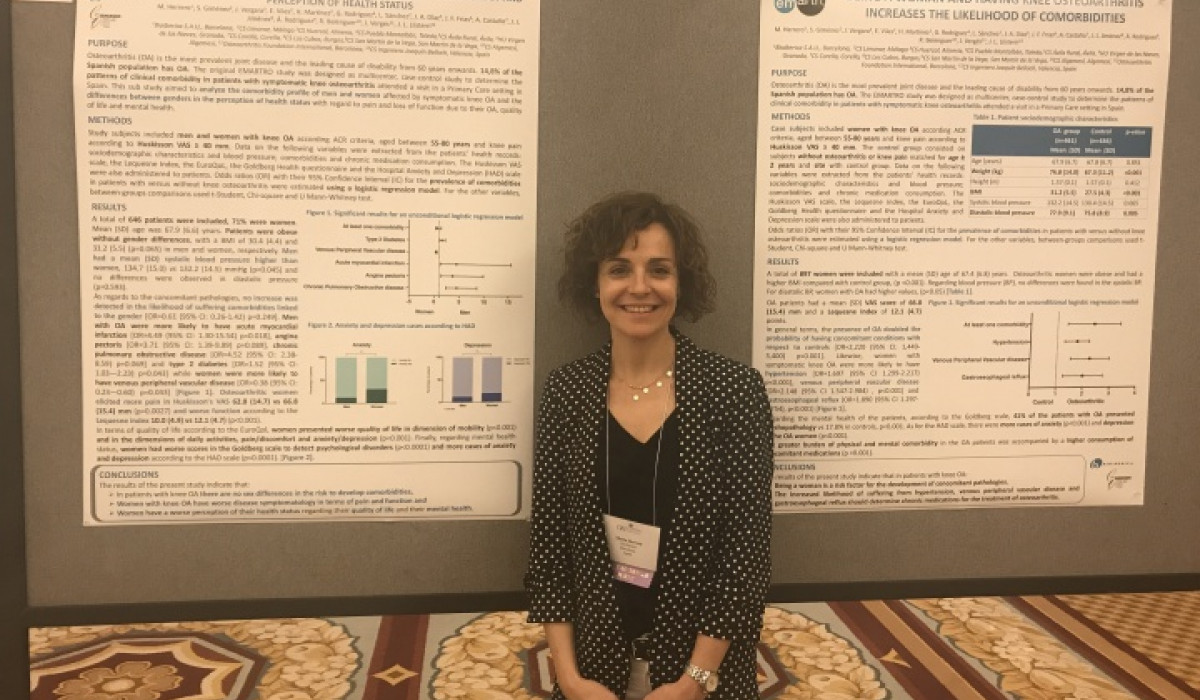Being a woman and having osteoarthritis multiplies the possibility of suffering other diseases
- The most frequent diseases are anxiety and depression, high blood pressure, gastro-oesophageal reflux disease and peripheral vascular disease
- Women also have a worse perception of their quality of life, have more pain and reduced mobility
- Specialists indicate the importance of taking these differentiating factors for women into account when deciding on the best therapeutic approach for osteoarthritis

Being a woman and having osteoarthritis doubles the possibility of suffering from other diseases. This is the main conclusion from an analysis performed using the EMARTRO study (Study to assess comorbidities in patients with symptomatic knee osteoarthritis), which was recently presented in the Osteoarthritis Research Society International (OARSI) World Congress held in Las Vegas (USA).
Specifically, the work shows that 31% of women with osteoarthritis have anxiety and 20% have depression, compared with 12% of men. Women also have a worse perception of their quality of life and more symptoms arising from their osteoarthritis: they claim to have more pain than men and more mobility problems to carry out their daily activities.
Women with osteoarthritis have been observed to be 70% more likely to have high blood pressure, 89% more likely to have gastric reflux and 115% more likely to have peripheral vascular disease than women without osteoarthritis.
“If on top of these differentiating factors we add the fact that the majority of the women studied were overweight, the cardiovascular factor takes on special importance. All this information is essential to be able to improve the quality of life for patients with osteoarthritis and to decide on the best therapeutic approach in each case”, explains Marta Herrero, the study's principal investigator and the director of clinical research for Bioibérica.
Another conclusion specifically makes reference to the medications. The study reflects that 58% of patients are treated with analgesics, 36% with anti-inflammatory drugs, 20% with opioids, 16% with SYSADOA and 13% with COX-2, with no reference to sex. “We have detected a high rate of anti-inflammatory drug prescription in a population with a high risk of cardiovascular and gastric problems and an exponential increase in opioid prescription in an ageing and polymedicated population. In these types of patients it would be more appropriate to consider the use of other pharmaceuticals such as chondroitin sulphate, it is specific for osteoarthritis, with demonstrated efficacy and a high safety profile”, adds Herrero.
The EMARTRO study included the participation of 1,371 patients (from both rural and urban areas, between 55 and 80 years old, with symptomatic osteoarthritis of the knee) and 63 primary care physicians from 14 autonomous communities. EMARTRO is a multi-centre, epidemiological study of comparative cases and controls with patients with and without osteoarthritis in any location and without gonalgia, carried out at the national level by the Spanish Society of Primary Care Physicians SEMERGEN, with the collaboration of Bioibérica.
“EMARTRO is the first study on osteoarthritis carried out at the national level by a Primary Care company, the speciality closest to patients. We wanted to have a current in-depth study of osteoarthritis in Spain as it is the second most frequently diagnosed disease in Primary Care. As such, we here in SEMERGEN, have decided to push promote the study”, stated Dr José Luis Llisterri, president of SEMERGEN.


